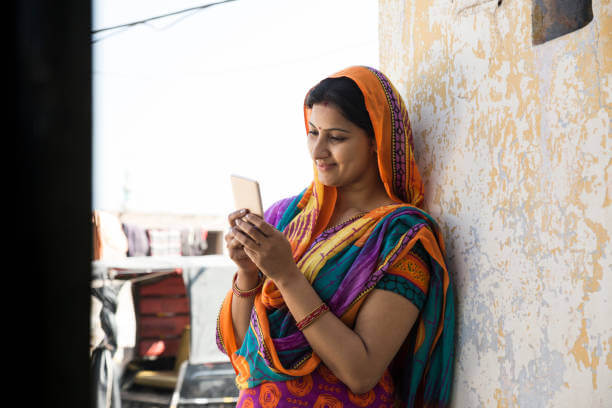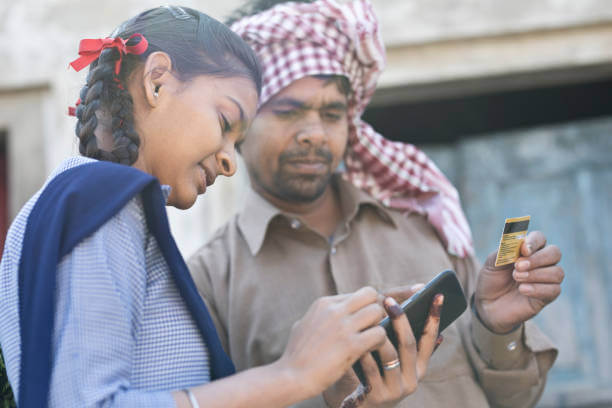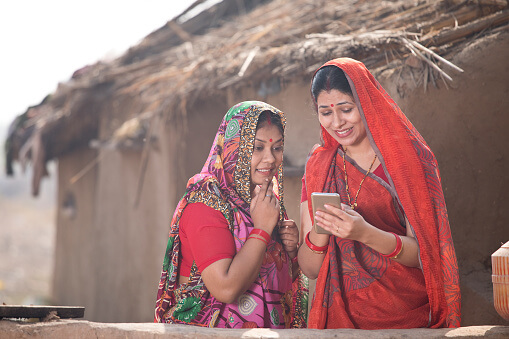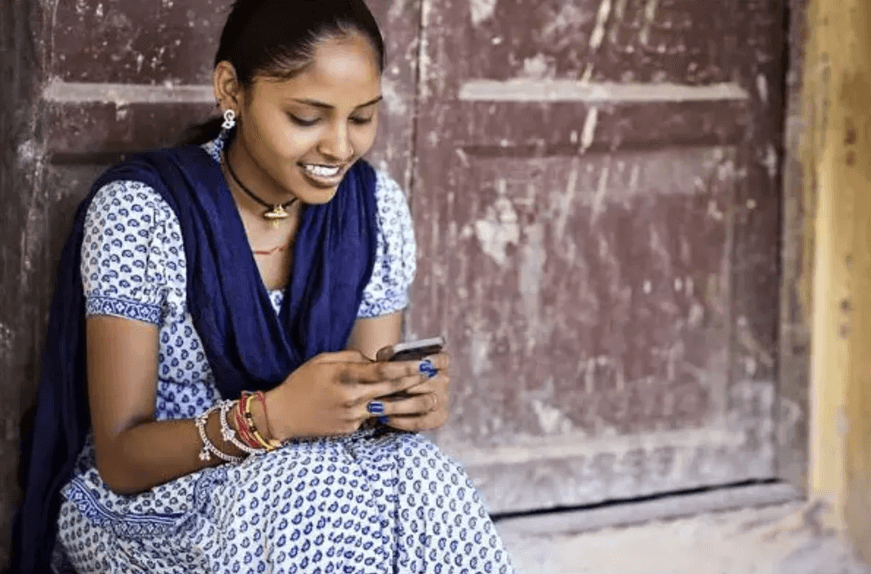Over the last few years, we at BusyBee have been privileged to speak to hundreds of consumers across town classes- ranging from Kanpur to Kolhapur and from Motihari to Mangalore. In the process, the evolution of non-metro consumers has fascinated us. In this article, we have synthesized findings derived from our first-hand interactions and immersions with non-metro consumers for categories ranging from Chai to Crypto Currency and Fashion to Fantasy Games.
Non-metro-consumer trends marketers should take cognizance of:
Smartphone & Social-Media are nudging them to dream big
Smart Phone is their gateway to the larger world, and social media is their one-point source for education, information, interaction, networking and news. It has helped them expand their reach, get global inspiration and confidently stand at an even keel. Digital democracy has led to an escalation of expectations and an amplification of aspirations. They don’t just aspire but also have a belief that they can fulfil their aspirations right from where they are. From girls in Hardoi in UP making slick reels on Instagram to a coaching teacher from Satara popularizing his courses on YouTube to an aspiring poetess in Gwalior and a young adventure-biker from Asansol using different social platforms to build a fan base, there are many instances of non-metro consumers using smartphone and social media to assert their views, play up their passions and unlock new opportunities.

App-economy has made them confident consumers
Beyond generic functional benefits like better convenience, app-based services have helped them showcase their individuality and confidently exercise their choices. For those dwelling in close-knit societies and often joint families, apps give a sense of independence. From a young girl in Motihari who has moved beyond the local market to buy fashion of her own choice from Myntra and Meesho to a school teacher in Chitradurga who has moved beyond the advice of his father to make independent investment decisions through PayTM Money to a home-maker in Ludhiana who doesn’t have to depend on her husband to take her daughter to hobby classes, thanks to Ola and to a retired elderly couple in Agra who order all their medicines online, apps come across a social and cultural game-changer for non-metro consumers. They have helped them become much more DIY and confident in life.

Reviews and Ratings are both a tool and an ammunition
Universally, ratings are a quick metric to gauge the suitability of a product or service. For non-metro consumers, in particular, this crowd-sourced wisdom has reduced the perceived power distance between them and brands. Knowing that feedback from people like them can impact purchase decisions, they feel empowered to enforce a corrective action by posting a rating or review. And while they do that, they can be indiscriminate about channels- from brands’ marketplace listing to social media channels and from its YouTube ads to influencer videos, they go all guns blazing to get brands attention. From the positive assertion of “Rating dekh ke hi khareedte hain” to the thinly veiled threat of “Rating kharab ker denge”, the rating and review economy has turned them into empowered consumers

Balancing culture with curiosity, they quickly absorb, adapt and adopt the new
They are rooted and are quite protective of their culture. At times they may even come across as too rigid in their views. However, thanks to rising access and aspiration, they don’t want to be left behind. They have this unique knack for tweaking new trends to suit their cultural context and once done, they often pursue them with greater fervour than even their metro counterparts. That’s how occasions like Mother’s Day, Father’s Day, Friendship Day etc., have become a big phenomenon in non-metros, with consumers celebrating them with reels and WhatsApp stories. Similarly, theme parties (complete with dress code and décor) have become quite popular even in non-metros. This balancing act can also be seen in the rapid adoption of Indo-Western Fashion, Indianized Chinese / American food and pre-wedding shoots in these markets.

With right value-adds, they can come up the curve really fast
Seeking both value and variety, non-metro consumers are comparative and exploratory. While they do expect talk-worthiness and aspiration from brands, they cannot compromise on functional utility. A clear and compelling functional benefit coupled with discounts, coupon codes and price-offs that sweeten the deal quickly attracts their attention. With the right incentives and relevant benefits, coming up the curve for non-metro consumers can be really fast, completely skipping intermediate steps. Jump from cash-only to app-only in payments, from cable TV to YouTube in entertainment, from voice calls to Video Calls in communication and from Cash-on-delivery to Real Money Gaming- are some remarkable examples of this ‘coming up the curve’ behaviour.

Caginess and Caution sit curiously with blind belief and trust
Interestingly, when it comes to posing trust, non-metro consumers can be quite polarized. They are sceptical about claims, wary about the possible ‘catch’ and often tend to consult their social circle for reviews and opinions. However, once convinced, they can go all-out to show blind faith. Brands can learn a lot from how ‘Personal Brands’, including influencers, politicians and celebrities, have built a huge fan base in non-metros that’s willing to believe and follow their every advice or recommendation. As an unfortunate flipside, there are also glaring examples where non-metro consumers often end up falling prey to financial scams and fake forwards due to this very behaviour. Relatability- in terms of cultural and linguistic similarity- often helps to lay the foundation of trust. A brand like Patanjali, which leveraged the power of vernacular content and culturally relevant insights to garner good appeal in non-metros, offers a good playbook on how it’s done.

Value personal touch & open conversations over professionalism & political correctness
Non-metro consumers often wear their emotions on their sleeves. Once comfortable with someone, they believe in no-holds-barred conversations. The concept of ‘personal space’ is still not mainstream. Hence it’s quite common to enquire someone about their cast, salary, plan for home/kids or whether their marriage is ‘love or arranged’- questions that could otherwise be considered an outright invasion of privacy in a typical metro setting. And this behaviour and expectation extend on to brands too. They want store assistants to guide, educate and steer them to the right merchandise; they want customer support to speak in their language and give them a sense of comfort rather than offering prim and canned replies. Even with voice assistants and chat-bots they often communicate via conversations than commands (e.g. “Alexa please ek Bhajan chala dijiye”). In our research fieldwork too, once settled, some non-metro households went as far as sharing their personal problems with us (e.g. daughter not getting married, son in a buri sangat…), and a few even invited us to have lunch with them, since we are their guests!

Implication for brands
Don’t underestimate non-metro evolution curve
We have often seen brands being dismissive about non-metros, claiming that ‘our brand caters to a metro trend’. However, as is evident from the above behaviors, their own internal data might throw up a surprise. And we have seen this in categories ranging from fashion and personal care to Crypto and Social-Media. By offering the right incentives and value-adds, marketers can leverage the huge non-metro opportunity that’s often hidden in plain sight.
Meet them where they are
They are aspirational, ambitious, and want to leverage new opportunities without losing their cultural moorings. With knowledge democracy and digital empowerment, they are confident of achieving this. Brands need to respect this sentiment and meet them where they are. By leveraging the power of vernacular content, culturally relevant influencers and the right insights, brands can win their heart and mind. Stereotyping or being condescending is a sure way to alienate them.
Show a clear value-add
Non-metro consumers can build deep relationships, but the starting point is always a strong functional benefit that can get their attention in the first place. Trial and consideration of non-metro consumers is rarely a function of emotion alone. However, once the value-add is clear, non-metro consumers are far more open to deeper engagement. And even then, marketing that espouses lofty global concerns may not find resonance among this cohort.
Narrative of nativity cannot paper over service deficiency
Some brands feel that given their strong ‘pride in origin’ sentiment, a ‘made in India’ narrative would alone suffice to build a strong loyalty among non-metro consumers. However, this is far from the truth. Non-metro consumers are now accustomed to the user and tech experience of global platforms (Facebook, YouTube, Amazon), and their expectations are moulded accordingly. ‘Made in India’ cannot compensate for poor customer service or sloppy tech.
Do not take their loyalty for granted
Another common mistake marketers make is to take non-metro loyalty for granted because ‘they don’t have many options’. This is again a flawed assumption. With digital and online, not only is there a perceived abundance of choices, but there is also a constant stream of stimuli in the form of price-offs, discounts and offers that incentivize them to switch. Hence, a brand needs to constantly deliver good service to remain in their consideration set.
Rather than ‘lowest price’, offer ‘best value’
Finally, marketers sometimes assume that non-metro loyalty can be ‘brought’ as they are easily swayed by offers and discounts. However, it is imperative to note that rather than ‘lowest price’, a non-metro consumer is actually seeking ‘best value’. They are smart shoppers, and a brand that offers them a combination of aspiration, functionality and service is likely to find great traction, even if cheaper alternatives are available.
In Conclusion
Non-metro markets, given their sheer volume, present a great opportunity for brands. However, to really leverage this, marketers might need to let go of some preconceived notions, step into the shoes of this consumer and appreciate their world.

2 Responses
Very informative and useful, after doing in-depth research and analysis.
Thanks Vivek